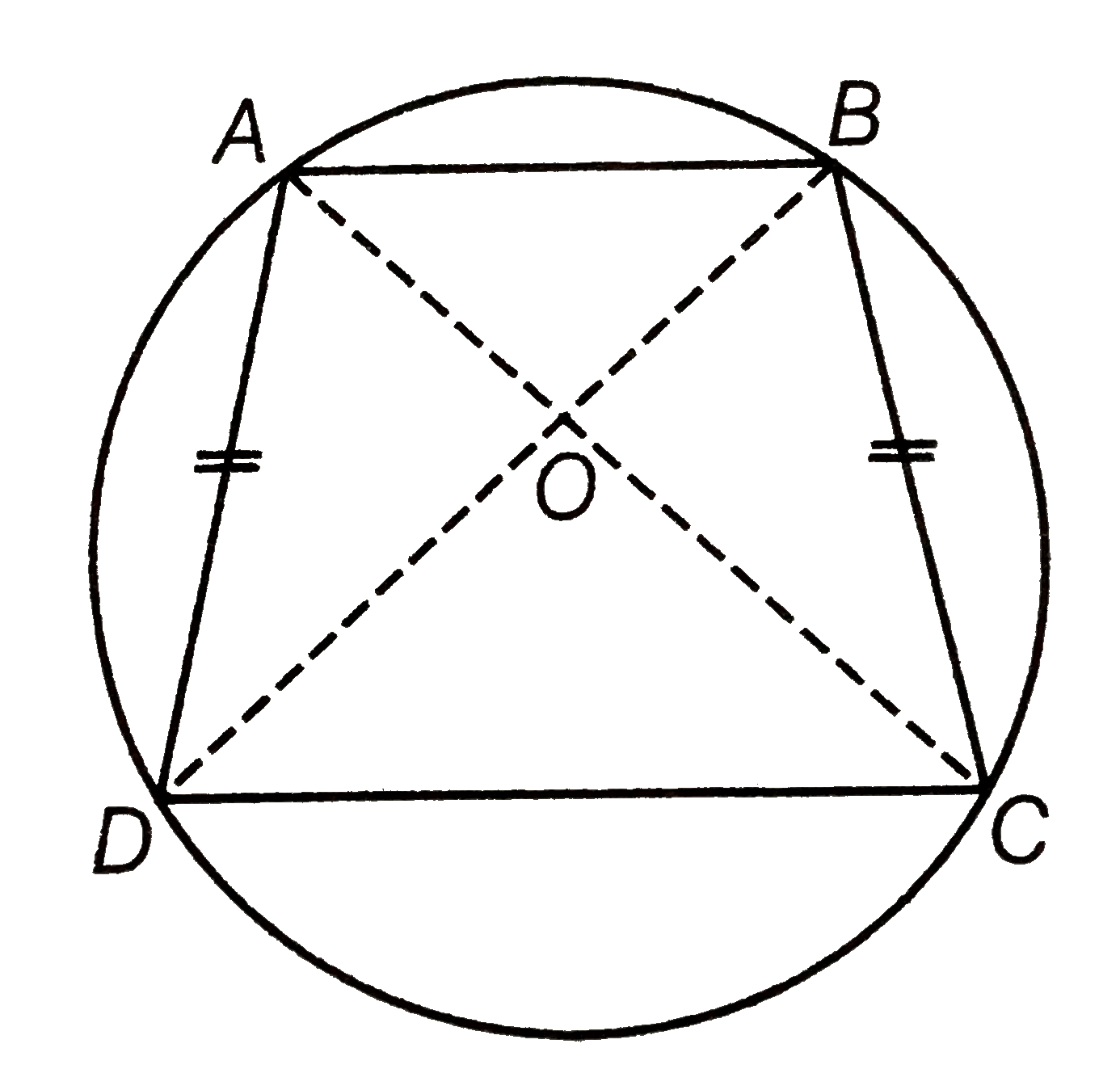If the two sides of a pair of opposite sides of a cyclic quadrilateral are equal, then
Given Let ABCD be a cyclic quadrilateral and AD=BC.

Join AC and BD.
To prove AC=BD
Proof In ,
[since, same segments subtends equal angle to the circle]
AB=BC [given]
[by ASA congruence rule]
Adding on both sides, we get
[by CPCT]
Topper's Solved these Questions
- BOOK - NCERT EXEMPLARCHAPTER - CIRCLESEXERCISE - Exercise 10.42videos
CIRCLES
- BOOK - NCERT EXEMPLARCHAPTER - Areas of Parallelograms and TrianglesEXERCISE - Areas Of Parallelograms And Triangles34videos
Areas of Parallelograms and Triangles
- BOOK - NCERT EXEMPLARCHAPTER - CONSTRUCTIONSEXERCISE - Long Answer Type Questions5videos
CONSTRUCTIONS
Similar Questions
Knowledge Check
- Question 1 - Select One
If the opposite sides of a cyclic quadrilateral are equal and the sum of two of the adjacent sides is 10 cm, find the maximum possible area of the quadrilateral (in sq. cm).
AA)100BB)25CC)24DD)data insufficient - Question 2 - Select One
How many pairs of opposite sides are there in a quadrilateral?
A1B2C3D4 - Question 3 - Select One
If the diagonals of a cyclic quadrilateral are equal, then the quadrilateral is:
ArhombusBsquareCrectangleDnone of these
Theorem 8.3 : If each pair of opposite sides of a quadrilateral is equal, then it is a parallelogram.
View SolutionComplete each of the following statements by means of one of those given in brackets again each: If one pair of opposite sides are equal and parallel, then the figure is ............... (parallelogram, rectangle, trapezium) If in a quadrilateral only one pair of opposite sides are parallel, the quadrilateral is .............. (square, rectangle, trapezium) A line drawn from the mid-point of one side of a triangle .................. another side intersects the third side at its mid-point. (perpendicular to, parallel to, to meet) If one angle of a parallelogram is a right angle, then it is necessarily a .................... (rectangle, square, rhombus) Consecutive angles of parallelogram are ...................... (supplementary, complementary) If both pairs of opposite sides of a quadrilateral are equal, then it is necessarily (rectangle, parallelogram, rhombus) if opposite angles of a quadrilateral are equal, then it is necessarily a ................... (parallelogram, rhombus, rectangle) If consecutive sides of a parallelogram are equal, then it is necessarily a ............. (kite, rhombus, square)
View SolutionIf two opposite sides of a cyclic quadrilateral are equal; then the other two sides are parallel.
View SolutionIf two opposite sides of a cyclic quadrilateral are equal, then the other two sides are parallel.
View SolutionTheorem 10.12 : If the sum of a pair of opposite angles of a quadrilateral is 180º, the quadrilateral is cyclic.
View Solution

